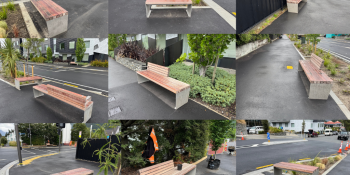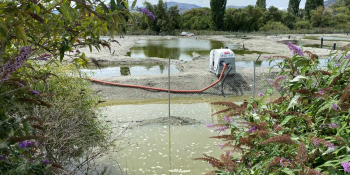Manapouri power could be the basis of a NZ hydrogen economy
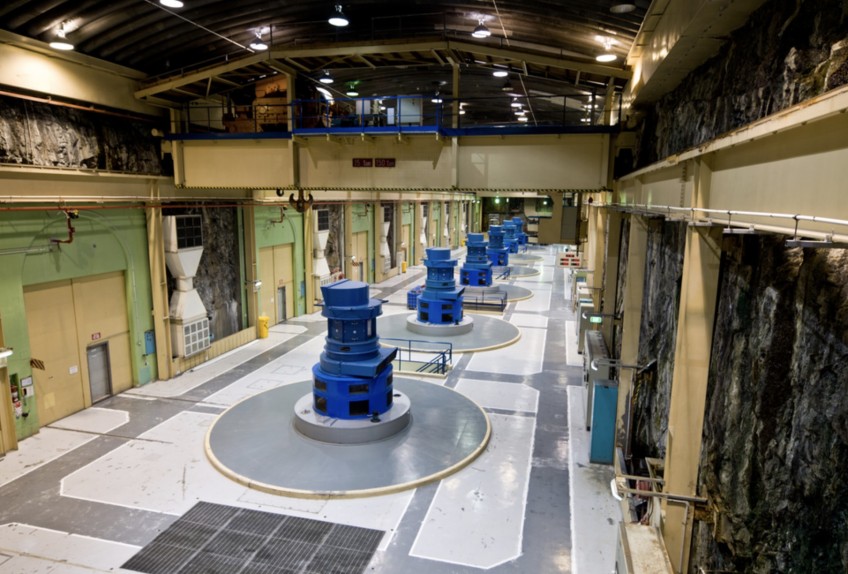
It seems clear that things are going to change in Invercargill - specifically with regards to Tiwai Point.
Local Queenstown resident, and former World Bank economist, Ralph Hanan argues that using Manapouri’s power for the national grid, or even a new proposed data centre, might not be the smartest choice. He says we should be looking hard at using Manapouri’s hydro power to kick start a nationwide Hydrogen economy - especially given the Government’s recent declaration of a climate emergency.
In November 2019, the Government passed the Zero Carbon Act, committing New Zealand to reduce its carbon emissions to zero by 2050. The legislation established a Climate Change Commission to spearhead the Government’s zero carbon plans and help meet its obligations under the Paris climate accords. Following the recent election, the Government appointed a climate change minister to take the lead at the political level.

Queenstown resident and former World Bank economist Ralph Hanan
Two weeks ago the Government declared a climate emergency, committing the public service to become carbon-neutral by 2025. The declaration acknowledged the urgency of the global climate crisis and the need collectively to confront it. Thirty-two other nations have formally declared a climate emergency.
Last July Rio Tinto announced that New Zealand Aluminium Smelters Ltd (NZAS) – 79.36% owned by Rio Tinto and 20.64% by Sumitomo Chemical Company - would close its smelter at Tiwai Point in August 2021. According to the company, the smelter is not economically viable with the prices it has been charged by Meridian for the electricity. The jobs of some 1,000 workers employed at the smelter and a further 1,600 jobs dependent indirectly on the smelter are likely to be affected.
Assuming the Government can reach agreement with Rio Tinto and NZAS on terms to maintain the smelter in operation, it is unlikely that such agreement would go beyond three years. It is imperative that the Government and local authorities begin planning for an alternative, productive use of the 850 MW generated by the Manapouri power station and transmitted to Tiwai Point.
On 11 December 2020, Stuff reported that Meridian and Contact Energy have committed $2 million to fund a feasibility study for a large-scale plant to produce Hydrogen in Southland, to replace the smelter in the use of Manapouri power.
Potential Uses of Manapouri Power
Three alternative uses have been proposed by different parties: connection of Manapouri power directly to the country’s grid; generation of Hydrogen, which could fuel a national Hydrogen economy; and development of a large data centre connected to the cloud.
Connecting the power directly to the grid would involve construction of a new high-voltage transmission line from Manapouri to somewhere near Roxburgh. The construction would take six or seven years and, according to some estimates, would cost around NZ$800 million, which is likely to be an underestimate. The cost of the power at the point of delivery to the grid would be substantially higher than its current cost at Tiwai Point.
Of the three alternatives, the generation of Hydrogen is likely to be the most viable option, technically and economically. Whereas a data bank could be a reasonable alternative from a technical standpoint, it would have far less impact than Hydrogen in terms of economic growth and employment, in Southland and throughout New Zealand.
Hydrogen Technology
The use of electricity to produce Hydrogen through electrolysis – splitting water into its components Hydrogen and Oxygen - is an age-old technology. By exploiting its mainly renewable sources of electricity (hydro, wind, solar, and geothermal), New Zealand would enjoy the climatic advantage of producing “green” Hydrogen. Most countries produce “gray” Hydrogen because they use coal or gas as energy sources for their electrolysis, emitting CO2 and other greenhouse gases in the process. Green Hydrogen would burnish New Zealand’s climate-change credentials through transition from traditional fossil fuels.

Manapouri power station - best used for the national grid, aluminium, a data centre - or a new Hydrogen Economy?
As a power source, the Hydrogen is combined with Oxygen from the air in a fuel cell to produce an electric current, which drives an electric motor. The only effluent from this chemical process is water vapour. When using renewable sources of electricity to produce the Hydrogen, the process is environmentally clean.
According to Bloomberg, the European Union plans to spend almost €500 billion (NZ$850 billion) on green Hydrogen production (from renewable sources) by 2050. It notes further that a viable green-Hydrogen industry could power the production of steel, cement and fertilizers; fuel trucks, trains, ships and aircraft; and in the process eliminate roughly a quarter of the world’s CO2 emissions.
A Hydrogen Economy
Hydrogen produced at Tiwai Point (or elsewhere in NZ) would be used initially for the country’s long-haul trucking industry, where the technology would have an advantage over batteries because Hydrogen has a higher energy density (kWh/Kg) than batteries. It would also power other ground transportation, including buses and cars, as well as coastal shipping and other watercraft, and aircraft.
The Hydrogen would also power stationary applications for institutions and residential use, as well as industrial applications like the manufacture of cement and fertilizers. Not least, the storage of Hydrogen would balance the intermittent power produced by wind turbines and solar photovoltaics, enabling those technologies to become an increasing source of the country’s electricity generation.
The export of bulk liquified Hydrogen is another possibility.
In the South Island, Hydrogen produced at Tiwai Point would be transported by dedicated Hydrogen tankers to dispensing sites along the main routes used by the trucking industry. Further dispensing sites would be established as the needs evolve, e.g., for cars, buses, and watercraft. For the North Island, the Hydrogen could be transported by tankers, or more likely by dedicated coastal shipping, a clear advantage of the Tiwai Point location.
Last week’s Economist reports that several companies, including Airbus, are working on prototypes of aircraft to run on Hydrogen. The electricity produced by fuel cells power electric motors, which in turn drive the propellers. A Los Angeles firm expects to have a 40-seat de Havilland Dash aircraft running on fuel cells by 2025. Other production-version propeller-driven planes are undergoing testing in Europe and Canada.
Notably, fuel cells are better for powering flight because Hydrogen carries much more energy per Kg than is possible with batteries. Turbine-driven jet engines can also run on Hydrogen rather than traditional J1 fuel (kerosene).
The Cost of Electricity for Electrolysis
As with many new technologies of national significance, transition from our fossil-fuelled economy to a Hydrogen one can be accelerated by leadership and incentives from central Government, in close collaboration with the local authorities and the private sector. A critical component of the transition will be the cost of electricity to the electrolysis plant producing the Hydrogen. The private sector will participate only if its investments are viewed as financially viable and sustainable.
The original agreement between the Government and Consolidated Zinc Proprietary Ltd (the precursor to Rio Tinto), set out in the Manapouri-Te Anau Development Act of 1963, provided a formula for the cost of electricity to be invoiced to the smelter company. The formula was based on full cost recovery - capital costs and operation and maintenance costs - for supplying the power to Tiwai Point plus a profit margin to the Government of about 10%.
In 1977, the Government of the day abrogated that agreement. It unilaterally increased the cost of the electricity to a level related to the higher costs of generation and transmission elsewhere in New Zealand. Rio Tinto has long claimed that such higher costs have rendered the smelter operation uneconomic. For several years Rio Tinto has attempted to negotiate a lower cost of the electricity with the provider, Meridian. Eventually, in 2019, Rio Tinto took the decision to close the smelter in August 2021.
Pursuing the objectives of the Zero Carbon Act and facilitate the transition to a Hydrogen economy, it is reasonable in my view that the Government should revert to the original agreement for pricing Manapouri’s power. Now, after 50 years of operation, the investments in the power station and transmission line have been fully depreciated and the loans amortised.
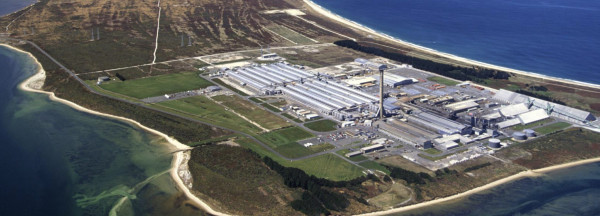
What should take the place of Tiwai Point? Cheaper national grid power, a new data centre or the start of a new national hydrogen economy?
To help a Hydrogen economy become established, the cost of delivering the power to Tiwai Point should be assessed at today’s financial cost (operation and maintenance of the power station and transmission line and a charge for asset replacement) plus a profit margin of 10%.
That cost should be substantially less than the long-run marginal cost of new power generation and transmission assets, which normally form the basis of electricity charges. The opportunity cost of the power, moreover, would be close to zero, given the absence of alternative uses of the power (absent a major investment in a new transmission line to connect with the grid).
The Path Forward
The availability of the Manapouri power station and transmission line to Tiwai Point for development of a national Hydrogen economy is an opportunity. It is an opportunity both for New Zealand in pursuit of its zero carbon goals and for the regional economy of Southern New Zealand. It would provide employment directly and indirectly, and spawn other economic initiatives based on a green product produced locally and utilised throughout New Zealand.
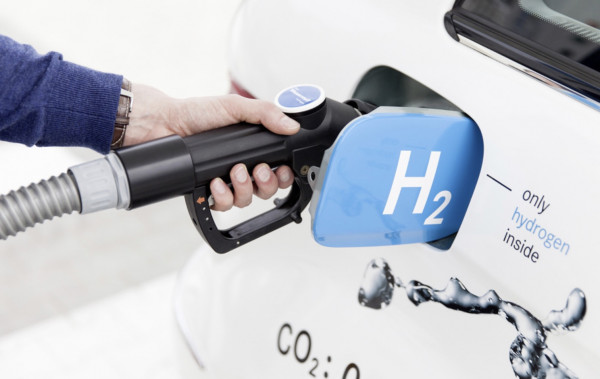
Hydrogen may be the fuel of the future - but it needs electricity as part of the production process
Notwithstanding the logic of transforming the use of an existing power generation asset to produce Hydrogen, there are competitive interests elsewhere in New Zealand wishing to avail of opportunities to produce Hydrogen. It is important therefore that the local authorities in Southern New Zealand engage with central Government and aggressively promote the Manapouri/Tiwai Point nexus.
The initiative of Meridian and Contact to fund a feasibility study for Hydrogen production is to be applauded. However, the large-scale use of Hydrogen in a national Hydrogen economy and enabling New Zealand to become a leader in a world facing the emergency of climate change is a much bigger picture.
I would suggest that the central Government and Great South should contract an international consulting firm experienced in the development of large-scale electrolysers to produce and store Hydrogen, and to help plan for its deployment to eliminate – or largely eliminate - the use of fossil fuels throughout New Zealand.
Through this bold initiative, New Zealand would be recognised internationally as a leader – as walking the walk – in the pursuit of innovative green and sustainable solutions to address the challenges of global warming.










